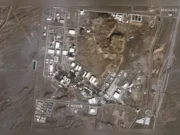Former U.S. President Donald Trump called for Ukraine to immediately initiate direct talks with Russia without a ceasefire. He felt that the earlier the talks take place, the earlier it could be possible to stop the war and restrict further loss of lives.
Ukrainian President Volodymyr Zelenskyy responded by saying he is willing to sit down with Russian President Vladimir Putin in Turkey this Thursday—provided Russia will commit to a full and permanent ceasefire starting on Monday. Zelenskyy emphasized diplomacy must be based on a clear termination of hostilities.
Russian President Vladimir Putin, on the other hand, proposed peace talks in Istanbul without conditions. He rejected Ukraine’s demand for a 30-day ceasefire. Meanwhile, European leaders have warned that Russia could face tougher sanctions if it fails to cooperate with peace efforts.
The ground reality continues to be shaky. There is still armed fighting underway, questioning the feasibility of any ceasefire or peace negotiations. Both sides have accused the other of breaching earlier understandings, and trust has not increased.
Flashback:
Previous attempts at diplomacy have been marred by negotiations between the two sides collapsing several times due to persistent violence and broken conditions. In 2023, a four-day temporary truce collapsed, and another fresh wave of attacks and casualties followed. International pressure for negotiations to end the conflict has only grown since then.
As world leaders call for peace, Trump’s recent remarks ignited fresh controversy as to whether or not Ukraine should negotiate with Russia under current circumstances—or wait for all hostilities to end.


























